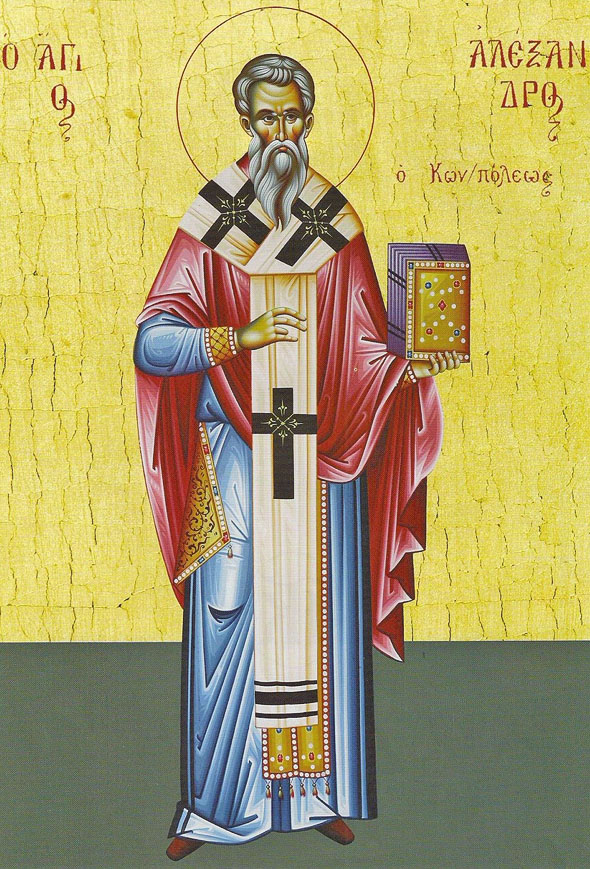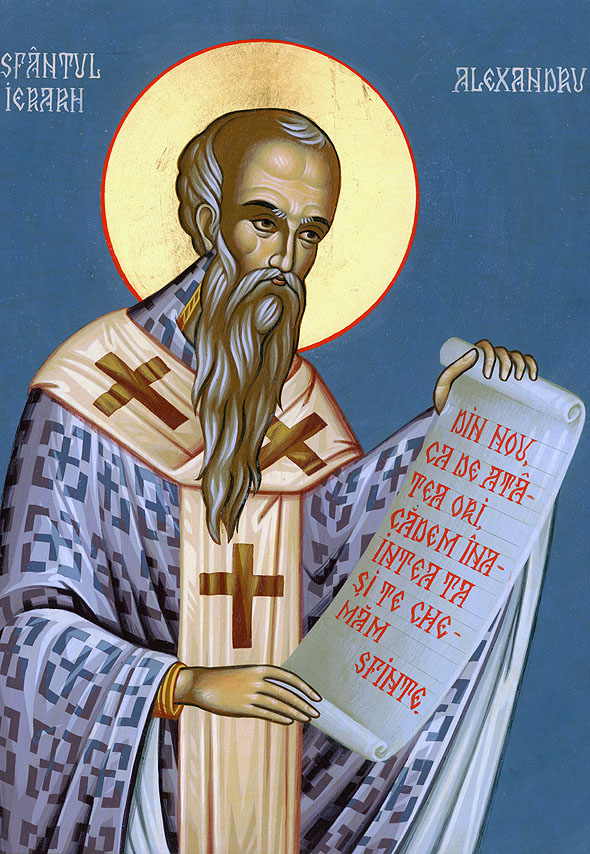Saint Alexandros, Archbishop of Constantinople († Dionysios, Metropolitan of Servia and Kozani)
30 Αυγούστου 2018
Today the Church celebrates and honours the sacred memory of Saint Alexandros, the Archbishop of Constantinople. Saint Alexandros lived at the time of the first Christian emperor, Constantine the Great. He was one of the Fathers of the 1st Ecumenical Synod which, in 325, in Nicaea, condemned the Arian heresy. The Archbishop of Constantinople at that time was Saint Mitrofanis, but, since he was very old and sick he was represented at the synod by Alexandros, who was still a priest. It was often the case that, for a variety of reasons, bishops were represented at synods by priests.
Saint Alexandros really was a bishop of the Church who was promoted by God. After the synod and the condemnation of Arius, and angel of the Lord appeared to the aged Archbishop Mitrofanis and revealed the will of God to him. First he confirmed that Alexandros had been his worthy representative at the synod and then told him that the latter would be his successor on the archiepiscopal throne This became generally known, and indeed, in a little while, after Mitrofanis had fallen asleep in the Lord, Alexandros was elected and succeeded him on the archiepiscopal throne. God knows his people and calls them at the proper time.
The first Ecumenical Synod condemned the heresy of Arius, but the turbulence in the Church had not subsided. And to this day it still hasn’t. The Arian heresy is the root of all heresies, some of which still trouble the Church today. Such as, for example the heresies of Millennialism or the Jehovah’s Witnesses. Like Arius, Millennialists deny the divinity of Christ; Arius said of Christ: “There was a time when He was not”, meaning that He came later, that He is a creation. This is what the Millennialists say, too. [Even Islam, which, when it first appeared was considered a Christian heresy, holds this view in a more extreme form].
It was not only at the synod, that Saint Alexandros opposed the heresy, but also later, as Archbishop of Constantinople. Constantine the Great’s successor was of an Arian frame of mind and the Orthodox bishops now had to confront not merely the heresy, but also the political authority, which sympathized with and assisted the heresy. It was not only in the ancient persecutions that the Church found itself in opposition to state power, but also in the Christian states themselves. Often enough, the erroneous notions of the leaders of the state or their political interests brought them into conflict with the faith and order of the Church.
The son of Constantine the Great, also called Constantine, was heir to the throne and a supporter of Arianism. After the synod, Arius pretended to be Orthodox and asked to be in communion with the canonical bishops of the Church. Through his hypocrisy and with the support of the emperor, Areios brought pressure to bear on the bishops. But there was no way that Saint Alexandros would agree to receive him into ecclesiastical communion, that is to concelebrate with him. In such difficult circumstances, the criterion is the Liturgy and Holy Communion. We can have collaboration and social relations with heretics, but never celebrate and take communion with them.
Arius met an ill fate in the years when Saint Alexandros was Archbishop of Constantinople. He departed, but the evil he brought upon the Church remained and to this day nourishes every heresy. Being a man, Saint Alexander also departed, but left the Church an icon of what a saint of God should be, a defender of Orthodoxy and guardian of the Apostolic traditions. Both at the synod, as representative of the venerable Archbishop Mitrofanis and also after the synod, he was a faithful guardian and defender of the decisions of the synod and of the tradition and legacy of the apostles. Amen.
Source: Metropolitan Dionysios of Kozani, Εικόνες έμψυχοι, Apostoliki Diakonia, pp. 430-432.







